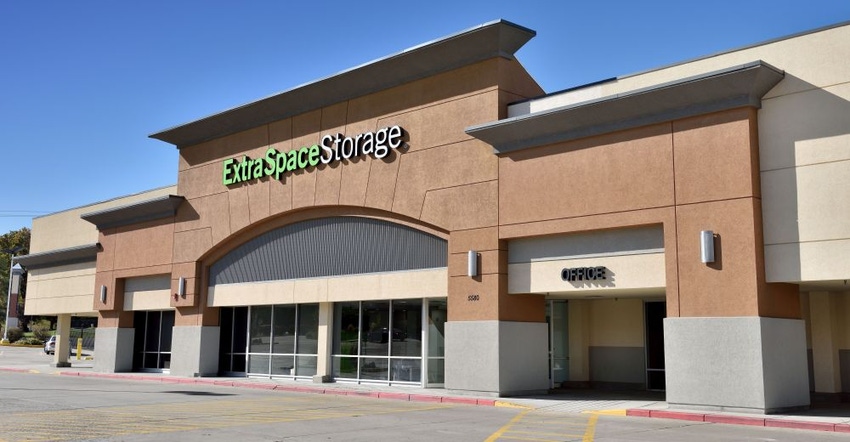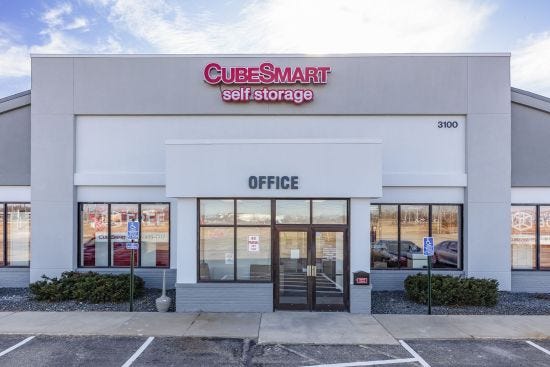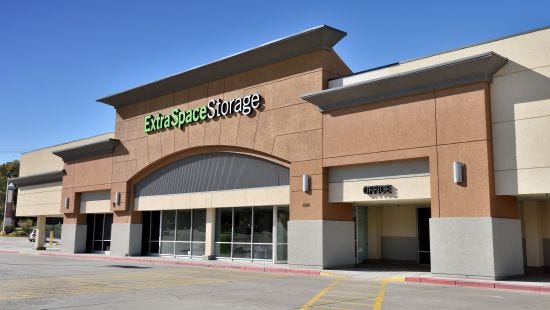Self-Storage Conversion Projects: Pros and Cons, Building Assessment, Design, Pitfalls, and More
Building conversion has been a popular approach during the latest self-storage development boom, but it isn’t right for every project. Read about pros and cons, site selection, building assessment, facility design, and common pitfalls to decide if it’s right for you.

Why all the talk about self-storage conversions? What are they? What are the pros and cons of this construction type? How do you choose and evaluate a building? What are the design considerations? Finally, what common mistakes should you sidestep along your journey? This article will answer those questions and help you understand if conversion is the right method of development for you and your organization.
Pros and Cons
A conversion is when you take an existing building that was used for some other purpose and transform it into a self-storage facility. It’s become popular during this most recent development cycle due to the decline in big-box retail, which has added a significant inventory of vacant buildings. It’s a great alternative to ground-up development.
Pros. Sometimes you can purchase an existing structure for less than it would cost to build it, so after completing the renovation, you’ll have a lower cost basis for your project. If you maintain the footprint, access points and site circulation, you may also be able to avoid going through the site-plan approval process with the city, which can save money and simplify entitlements. These advantages add up to an expedited construction schedule at a lower cost.
Cons. On the other hand, the structure isn’t purpose-built for storage and not always in an optimal location for visibility. Also, the design needs to adapt to the building, not the other way around, which can result in irregular unit sizes and long travel distances from loading areas to units. There might be an excessively large parking lot. The acquisition price and building condition can also negate the cost benefits. Finally, zoning can be a big hurdle, as many vacant buildings in commercial zones don’t allow storage.

A CubeSmart-managed facility in Rochester, Minn. (owned by Wasatch Partners),
converted from a former furniture store
Site Selection
Site selection for a conversion is no different than with a ground-up project. It’s critical to understand the existing supply of self-storage in the market and any new projects coming online. It’s critical to understand the rates, occupancies and condition of competitors.
After a complete and thorough market study, it’s imperative to determine if self-storage is allowed in the zone. If it is, you’ve hit the jackpot! But you may need a conditional-use permit or rezoning.
Always check the title and survey to determine if there are covenants, conditions and restrictions, easements, and other agreements that’ll impact your ability to convert the building. It’s common, especially with retail properties, to have private restrictions that prohibit self-storage, easements that impact circulation, common-area maintenance fees, shared utilities, etc. Environmental problems are also common, especially in older manufacturing and warehouse facilities. Understanding your site is a key part of having a successful project.
Building Assessment
Once you’ve chosen a location, it’s time to assess the structure itself. It’s vital to know about any deferred-maintenance items like the roof, structural components, parking lots, mechanical, etc. In addition, many old buildings have boilers, refrigeration systems and other items that are costly to remove. Depending on the age of the building, asbestos and other hazardous materials, remediation will need to be addressed. I recommend a thorough inspection of all systems as well as the building envelope.
If it’s a multi-story building or has a mezzanine, make sure the floor load is adequate for self-storage use. Surprisingly, a lot of buildings don’t have adequate floor loads. Understanding the condition of the existing structure allows you to include the cost of repairs in your budget.
Facility Design
The design of your self-storage conversion project will depend on the market and the product type that’ll be most successful. You need to decide if you’re going to offer heated, climate-controlled, drive-up and elevator-access units, or if you plan to expand. You also need to determine what your average unit size and mix will be. You need to see how it all fits within the constraints of the building and site you’ve selected.
In a standard conversion, you’ll use the existing building without changing the overall footprint. This is the easiest, most straightforward type of project. Another common practice is to add one or more floors in the existing footprint. In this case, keep in mind that you’ll lose efficiency because you’re adding stairwells and elevators, which take up space and add expense. Also, make sure you have a enough clear height to accommodate additional floors. Low ceilings and doors are undesirable for customers.
Increasing the square footage of the building via a footprint expansion or through the addition of more structures can be another great option. This allows you to add a new product type, such as drive-up units, that you wouldn’t otherwise be able to offer. Vehicle storage can also be a nice addition in the rear or side of the building to enhance revenue. At the end of the day, the design of your conversion will play a significant role in its success.

An Extra Space Storage facility in Murray, Utah, converted from a former grocery store
Common Pitfalls
I’ve learned the hard way about common mistakes and challenges of self-storage conversions. First, don’t assume that just because it’s a conversion it’ll be approved by the jurisdiction. In almost every case, you’ll need a conditional-use permit at a minimum, plus waivers, variances and an architectural review. If you’re doing an expansion or adding structures, it’ll require a full site-plan review. During this process, officials may require you to do other things to bring the building up to current code, such as requirements of the Americans With Disabilities Act.
If yours is a multi-story building, check the floor load to ensure it’ll work for self-storage. In my experience, buildings such as schools, office, retail, etc., can’t always accommodate it. The floor load can be enhanced, but that can be cost-prohibitive.
Older warehouse/manufacturing buildings almost always have an environmental history. Make sure you understand what’s been done and still needs to happen to make the facility financeable and marketable. Buildings that are part of a master-developed retail site or inline usually have private restrictions and agreements in place from years of operation. Review these thoroughly, so you understand the obligations and restrictions that encumber the property.
Finally, give yourself a big contingency. When working with existing buildings, you never know what you’re going to find when you begin demolition. There are always surprises. Be prepared, plan and budget to deal with unforeseen conditions.
Self-storage conversions are a great alternative to ground-up development. Evaluating the site, assessing the building, designing the project and understanding the costs will provide you the information you need to make a wise decision.
Scott Wyckoff is a founding principal of Wasatch Storage Partners, a nationwide acquisition, development and operating company. He began his career in the self-storage industry as a vice president of development and construction for Extra Space Storage Inc., where he was instrumental in the company’s redevelopment and Certificate-of-Occupancy purchase programs. His background in the nationwide development of self-storage facilities is unique and provides insight into the zoning and approval process. To reach him, call 801.692.1474.
About the Author(s)
You May Also Like





